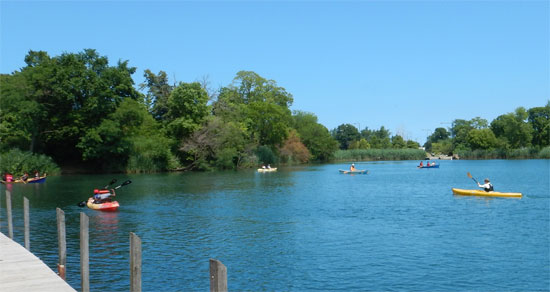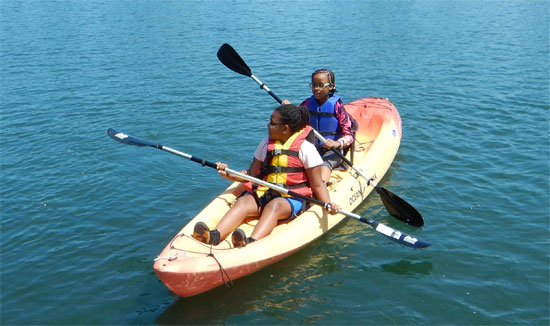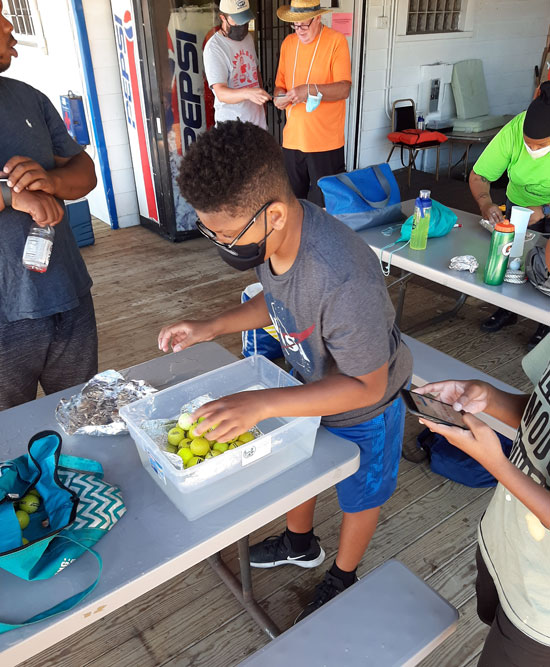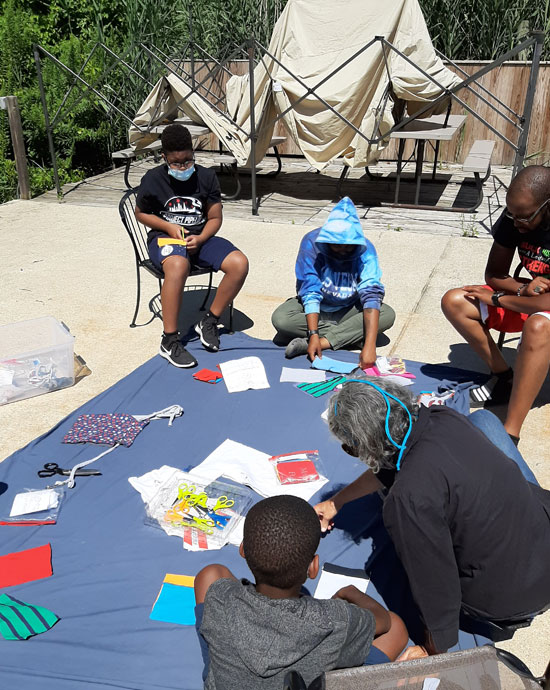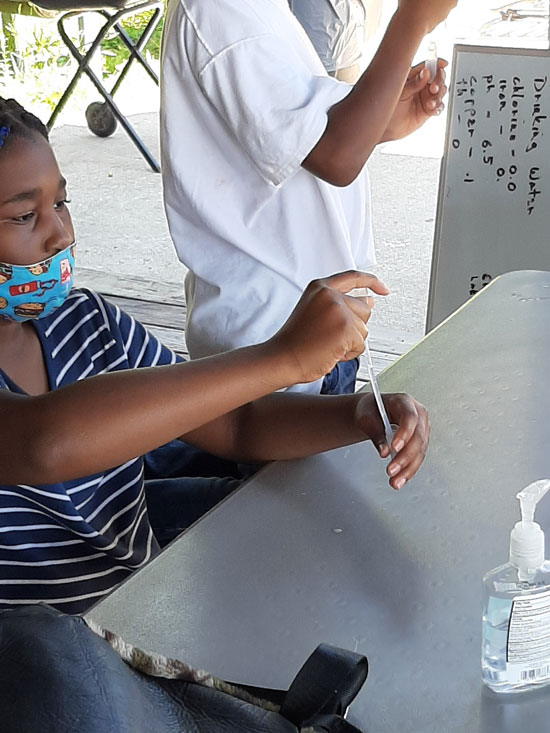CMAC Boating Skills and Ecology Course 2020 Wrap-up
The weather was beautiful last Friday, the final full day of the course. Armed with their newly learned skills, our students were ready to venture beyond their horizons. I learned long ago that our limits are never fully fixed. Once we stretch them past the familiar, beyond their “back yards,” we define new back yards. For these young mariners, their back yards now include the waters in and around Chicago and Lake Michigan.
 Upon arrival, we let our students know that we were going on an extended expedition. We headed to the far end of the lagoon, through the channel under Lake Shore Drive and out to the mouth of Jackson Harbor, and for the willing, out into Lake Michigan. The students turned to look in the direction of the underpass of Lake Shore Drive and inquire, “beyond there?” “Yes!”
Upon arrival, we let our students know that we were going on an extended expedition. We headed to the far end of the lagoon, through the channel under Lake Shore Drive and out to the mouth of Jackson Harbor, and for the willing, out into Lake Michigan. The students turned to look in the direction of the underpass of Lake Shore Drive and inquire, “beyond there?” “Yes!”
Excitedly, the young mariners don their PFD’s and take to the boats; some in kayaks, some in rowing boats. Even the adult chaperones join us for this expedition. Within a few minutes, our home dock fades from view, and our gaze turns towards the big water.
Each mariner gains a personal perspective on this journey. Some like “O” become waterbugs, darting back and forth in his kayak as if he were running around the playground. Others struggle with balancing the power between the arms in their growing young body. Each stroke brings new confidence and skill. One by one, we reach the harbor entrance, and the more adventurous mariners push their bows out to the unknown to have a look around at the wide-open horizon.
We return in time for lunch after which we commence an afternoon of fun competitions. Most notably, two-person teams row across the thoroughfare to the other dock, tie up their boat, hop in a kayak, and return, splashing and cheering the entire way.The teams dramatically complete the challenge within seconds of each other.
Saturday is our final half-day; a chance for the mariners to display their new skills to parents and coaches. As the students arrive, we ask them to grab their PFD and go to the other dock to bring the boats over to the yacht club. We stay behind, allowing the young crews to manage on their own. Showing no trepidation, the mariners arrive at our docks and tie up their crafts.
As we gather to review what we have learned over the week, we ask each student what they learned. The answers come quickly… tying knots, water quality, rowing, kayaking, how to tie up a boat… etc.
It’s vital to help identify for these young mariners what they’ve accomplished in addition to what they’ve learned. I hint with a question, but before allowing them to answer, I explain that just six days ago, the students had never been in a boat before, and this morning, the adult instructors trusted you to go to the other dock, alone, and get in a boat and row it over here.
For a young person, testing horizons and the limits of their freedom is often hindered by an adult concerns and reservations. Today, these young students earned those new freedoms and a better understanding of a new environment.
On a personal note, I can hardly remember back to when I first rowed a boat, or the first time I sailed the Sunfish alone. The first time I crossed Lake Michigan is a bit clearer to me, but still, long enough ago that the details and thrill of that accomplishment are muted. While my back yard and playground have expanded to the entirety of the earth’s oceans, my time spent with these students returned me to the memories of the first time I rowed a boat, and the camp instructor who yelled at me for “windmilling” – a term I would soon learn meant flailing my oars.
Returning to that time in my life with these young people brought back a flood of joyful memories. When I began this story, I asked,”Have you got a minute?” So, have you? Remember your first accomplishment as a kid? Come back home and share it with the next generation. They need it now more than ever.
– Captain Dave

